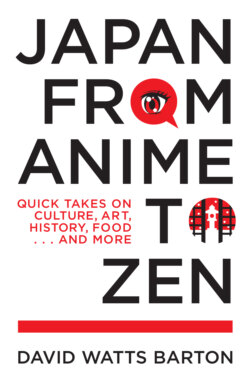Читать книгу Japan from Anime to Zen - David Watts Barton - Страница 20
На сайте Литреса книга снята с продажи.
9. What Makes Kobe Beef the World’s Best?
ОглавлениеIn the world of beef, there are top sirloin steaks from Omaha, steak au poivre in France, and lomo from Argentina. But Kobe beef stands alone, with a reputation for high quality and a deep mystique surrounding its breeding and raising practices.
Beef cattle have been raised in Japan back to pre-history, but in very small numbers, given the rugged terrain of this mountainous archipelago. Because of imperial decree, until very recently, the native cattle—Wagyu beef cattle, a name that combines the ancient name for Japan, Wa, with gyu, for beef—have been bred in isolation, and are thus distinct from the more common European breeds that have spread around the world.
But given that so many things in Japan are, or at least seem to be, from a long-established tradition—think tea cultivation, seaweed in cuisine, and traditional post-and-beam architecture—visitors are often surprised to learn that world-famous Kobe beef has barely reached the half-century mark.
Kobe beef only became internationally known in the late 1950s and early 1960s, when cattle ceased to be beasts of burden, and it was only in 1983 that the Kobe Beef Marketing and Distribution Promotion Association was formed to oversee quality and protect the Kobe trademark.
But the Japanese cattle producers applied themselves to this new industry as the Japanese do to nearly everything, investing a great deal of care and subtlety in Wagyu beef’s development. The result is one of the finest cuts of beef ever produced.
The desired qualities of Kobe beef—even marbling, a distinctive flavor, great tenderness, and a unique quality of fat—are important. But just as compelling is the manner in which it is raised: Very few Argentinian cattle ranchers are likely to give their bovine charges massages, and even fewer American cattlemen are going to be found sharing their beer with their livestock.
The result is a variety of beef that is highly prized and just as highly priced, with a pound going for as much as $300 in Japan. A 10-ounce tenderloin steak is currently on the Empire Steak House menu in New York City for $200. And that’s for Wagyu beef that likely never set a hoof on Japanese soil.
So, what makes Kobe beef so special, besides the world-famous price?
Tajima cattle are fattened considerably longer that cattle in the United States, living about twenty-six to thirty-two months, compared to eighteen months for U.S. cattle. Kobe cattle are not “free range,” or “grass fed”—trends that are growing in the U.S. market—for a variety of reasons. Densely populated Japan doesn’t have much range land, and certainly not in the Kobe area, a vast conurbation. In any case, each individual beast is so valuable that most Japanese beef ranchers are loath to leave their precious charges out in any open field (or weather).
Considering that they are being raised to be slaughtered, Wagyu beef have it easy. During the hot summer months they are fed with a bottle of beer a day if they don’t eat because of the heat. They are kept largely indoors to preserve their energy and are given special oil massages, which are thought to distribute their subcutaneous fat and promote the even marbling for which Kobe beef is known.
When the cattle are slaughtered, the qualities that make Kobe beef so special come fully into play. If all has gone well, the meat from the cattle is consistently marbled. Not just that, but the quality of the fat itself is qualitatively different from that of most beef. The melting point of fat of Kobe beef is said to be considerably lower than that of common beef fat, meaning it requires less cooking. And it is also said to be much higher in unsaturated fat, with high levels of oleic acid, making it similar to olive oil.
Because it is so popular in Japan itself, very little Kobe beef is exported, and a hoof-and-mouth disease outbreak in 2010 led the United States to ban Kobe beef for several years. The relatively small number of individual animals that may qualify as Kobe beef is a big part of why the resulting meat is so expensive. Only about three thousand head of cattle can be called Kobe, a result of the high costs and labor-intensive nature of raising the cattle, as well as the length of time they are allowed to mature.
Most of the Wagyu beef produced today is raised outside of Japan, largely because of the greater availability of grazing land and cheap feed. It is then sent to Japan for the final finishing needed to please that discriminating market. Beef called “Kobe” outside of Japan is most likely the result of this process. It may well have grown up in California (or Australia) and been “finished” in Japan.
But to be true Kobe beef, the animal must be a Tajima cattle, actually born and slaughtered in Hyogo Prefecture, with a high marbling ratio, among other factors. Thus, Kobe beef is hard to come by in most of the world, yet another good reason to visit Japan.
